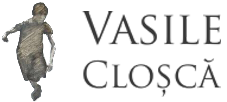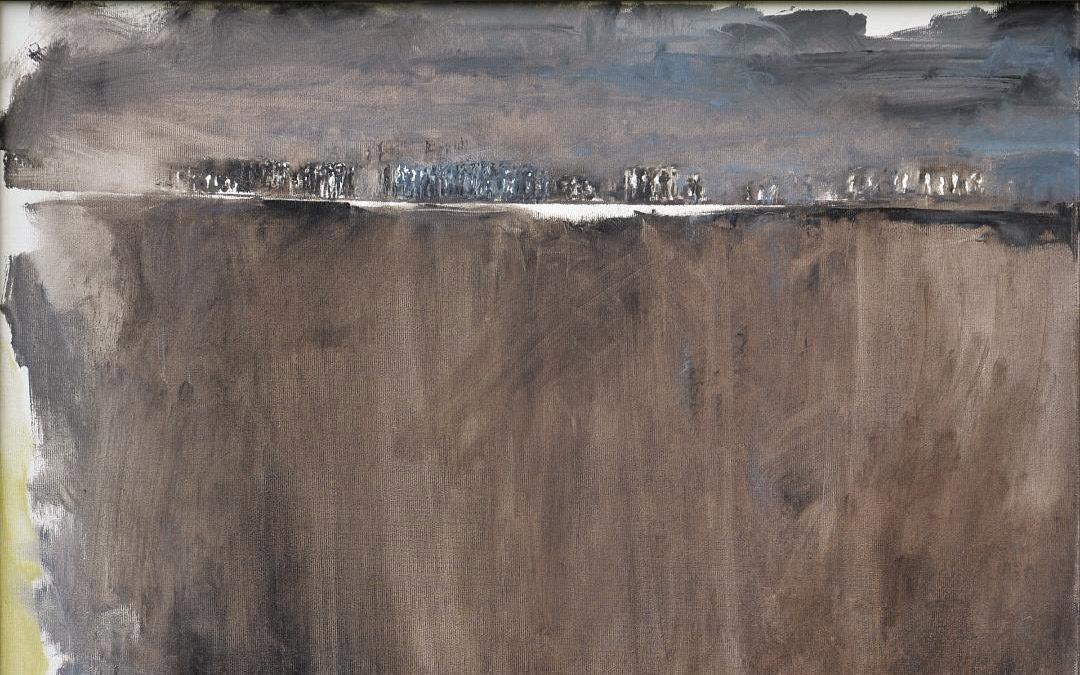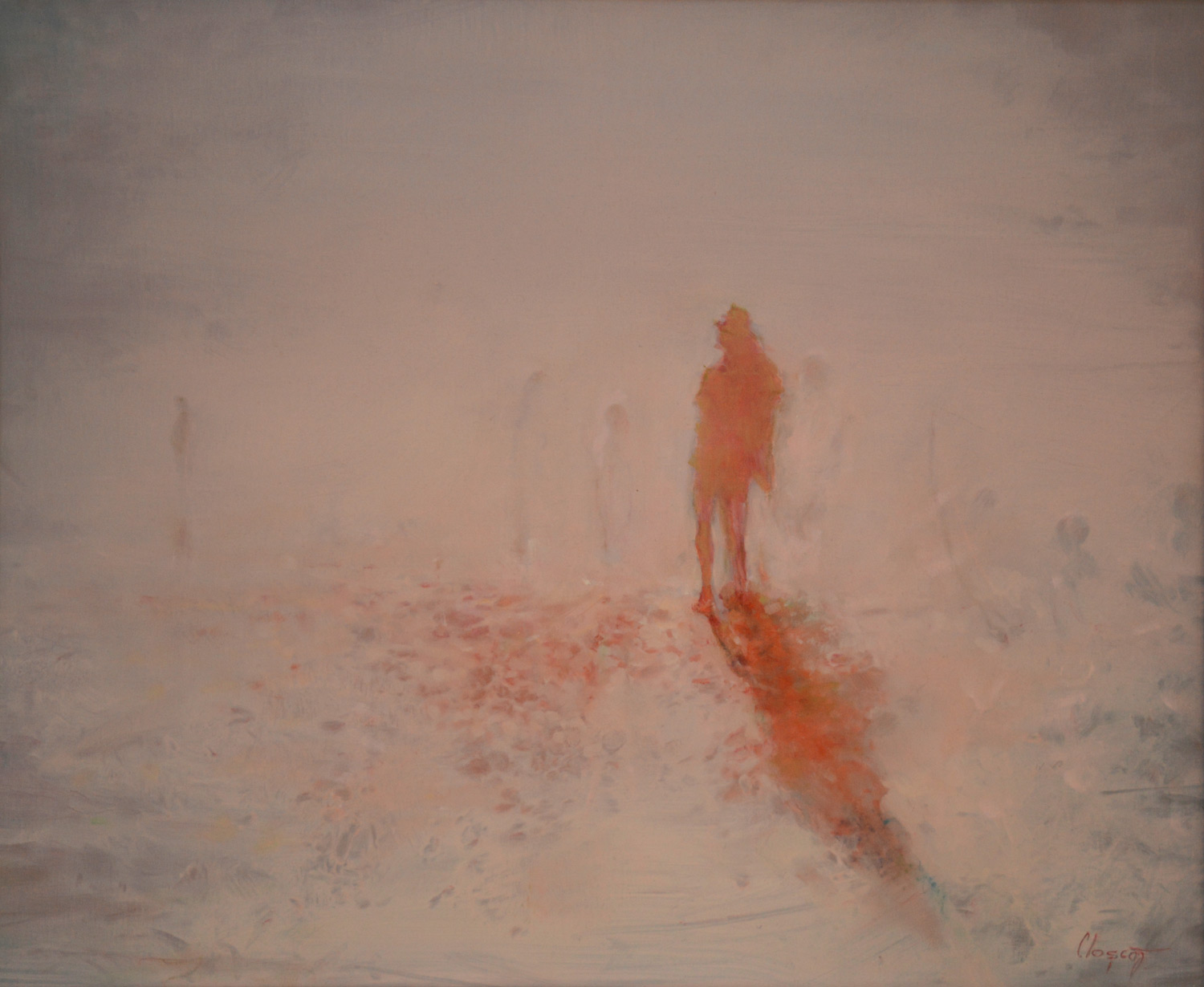Open archive includes a curatorial selection of paintings created during 2010-2018. The curatorial concept speculates the terminological flexibility of the archive, conceived as a dynamic form of recomposing realities from disparate visual fragments. The classic meaning of the archive, that of storing a personal or collective memory, is replaced here by a mobile one, which implies a composite stratification. Vasile Cloşcă’s archive is therefore not a documental museum, but a palimpsest of images in various stages of coagulation, recovered either by overlapping multiple representations or by distributing micro-images in a carefully managed pictorial-photographic collage. The other term of the phrase – open – is equally relevant. The preconception that archives contain intrinsic meaning is deconstructed by the fact that the archive really exists only when it is discovered, interpreted. Only the creative intermediation of the one who explores its multiple layers – that is, recomposing its constitution, understanding its cultural nodes – makes it truly exist. This new configuration, thus, marks not only a reflexive way of referring to the mental object of the visual representation, but a true moment of knowledge. As the theory of reception has taught us, in an open archive meaning is no longer an object to be defined, but an effect to be experienced.
Vasile Cloşcă shows a constant concern for the worlds beyond the frame, where other petty lives get consistency. Through the palimpsest technique, by refining the colors and carefully controlling the vibration of the surface, the artist aims at a correlative integration of the images, rather than narrative. The works have a somewhat bizarre, oneiric atmosphere, but not oppressive or alienating, the characters and objects being carefully constructed, sometimes with ”photographic” accuracy. There is almost a creative obsession for figurative details that contrasts with the apparently spontaneous color surfaces.
Using a poetics of detail, Vasile Cloşcă reproduces the motif of the open window to other spaces – an almost cinematic reference. Each time there is a gaze exploring the depth of the canvas. Common elements to seemingly unconnected worlds are atypically correlated. The imaginary universe is dominated either by couples (in various intimate situations), or by groups of children (each submerged in their own playful reflexivity), or by performative characters looking for spectators. These anthropological representations are often framed by urban landscapes, and sometimes by apocalyptic halos (an eye bull suspended in the clouds in a surrealist torture scenario, a human character collapsed in a desperate tension).
Fundamental for Open Archive project and exhibition is the absence of any mimetic-realist props, which is replaced by a magic-realist one: a universe in which bodily postures, gestures, reactions, identity conventions and the entire socio-cultural theatricalisation of life have penetrated. But in which society is surprised by images of crowds of individuals who interact (sometimes disoriented) and seem to seek their place in a relational puzzle. The backdrop, this time, is of enormous space (an endless plateau, a panoramic street, a monumental chasm, a nebulous horizon). The entire conceptual and compositional effort uses a relatively narrow palette, especially earth colors: browns, orchestrated refined grains, which, depending on the thematic context, induce contrasting light effects.
Vasile Cloşcă intuitively encodes his cultural quotes. However, the chromatic aspects, and also the painting technique, as well as the magical realist atmosphere, can make reference to painters such as Michael Borremans, Marlene Dumas or Luc Tuymans, and the overlaid browns and grays sometimes suggest the dark atmosphere of the painters of the School of Cluj.
CLAUDIU TURCUȘ














